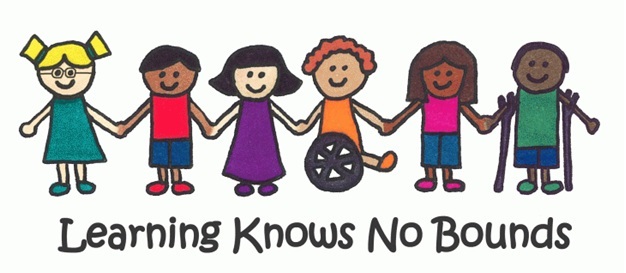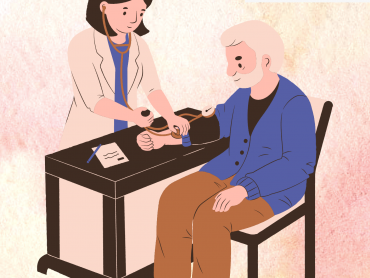“Diversity is the mix. Inclusion is making the mix work”
– Andres Tapia
Inclusivity in schools is a long-debated topic. It involves placing children with disabilities and learning difficulties in age-appropriate classrooms with reasonable adjustments and individualized strategies tailored to their specific needs. It is based on the assertion that all children should be provided with equal opportunities and every effort should be undertaken to highlight their strengths and support their weaknesses.
A term that is used interchangeably with inclusive education is mainstreaming. The two differ in some aspects, however, since mainstreaming expects the child with disabilities to keep up at the same pace as his peers whereas in an inclusive setting modifications are made according to the needs of the children rather than expecting them to conform to the norms.
Certain examples can be perused to understand the concept a bit better!
Student A suffers from ADHD. He is placed in a regular classroom set-up with his peers but is allowed to take breaks whenever required. He is assessed based on multiple-choice questionnaires rather than lengthy theory papers. He is excused from class presentations that require speaking in front of a large audience.
Student B suffers from a vision defect. She is provided with audio lectures which she can listen to while in class with the rest of her schoolmates. She is also provided with embossed textbooks and exempted from written examinations.
Student C requires a wheelchair. The school has built ramps around the campus to make it easier for him, to manoeuvre around the school. He also has access to special washrooms built to accommodate his wheelchair.
Strategies Employed

Image Source: https://www.vydehischool.com/blog/school-principals-desk/inclusive-education/
1) Universal Design for Learning (UDL)
UDL aims to use a variety of teaching methods and offer flexibility to accommodate every student’s needs and strengths. It not only benefits students with special requirements but provides each student with the freedom to learn using the method which suits them the best.
2) Individual Education Plan (IEP)
An Individual Education Plan is an ongoing plan of action that outlines the educational goals and strategies to be achieved for a particular student. Realistic expectations must be kept and continuous revision of the plan must be done according to the progress shown by the child.
3) Behavior Management Strategies
A comprehensive algorithm must be developed to manage disruptive behaviours exhibited by a student/ group of students. The authority in charge must refrain from being harsh or condescending while dealing with the child but utilize positive reinforcement and encouragement to deal with the situation.
Despite its noble intentions, grass-root issues must be dealt with before commencing such a program. Highly trained teachers, learning aids and resources as well as peer support are some of the building blocks required to integrate children at all levels of intellect into one classroom.
One of the major concerns plaguing the parents of a special-needs student is bullying by peers on school premises. Parents of conventional children on the other hand worry that their child may pick up nonconformist traits or behaviours. Without adequate education and communication, placing disparate groups of individuals in the same room could prove catastrophic.
If appropriately planned and executed, however, inclusivity in schools is a rewarding initiative. It instils values of equality and diversity in developing minds. Children with disabilities when placed in an inclusive setting tend to consistently challenge themselves and work towards achieving the same standards as their peers. They have an increased sense of self-worth and self-esteem which can get affected in the case of segregation of students. Inclusion also promotes the de-stigmatization of people affected with disabilities and paves the path for a more tolerant and well-rounded society. Peers of children with disabilities also get a chance to mentor and assist their batch-mates thereby developing a sense of responsibility early on in life.
India on Inclusive Education
So, where does India stand on inclusive education? In a country where primary education is a novelty for a vast majority of the population, does inclusion of special-needs students receive the priority it deserves? The Right to Education Act (RTE) does not contain a definition for inclusive education but refers to the Person with Disabilities Act (PWD) which states that children with disabilities must be integrated into ‘mainstream schools’ while also providing provisions for the set-up of ‘special schools’ where required.
In 2016, the Right to Persons with Disabilities Act (RPWD) was passed which contained a clear definition of inclusive education- ‘a system of education wherein students with and without disability learn together and the system of teaching and learning is suitably adapted to meet the learning needs of different types of students with disabilities. This was a monumental step in the right direction and set the premise for routine integration in Indian schools.
More recently, the National Education Policy (NEP), 2020, recognized the need for special educators on school campuses. A national assessment centre ‘PARAKH’ would be formulated to provide equitable assessment methods according to the students’ calibre.
There is, however, a clear disparity between planning and implementation in a resource-hungry country like India. While an inclusive set-up can be established fairly easily in urban metropolitan cities, the creation of a program such as this would prove arduous in the rural and backward areas of the country. A standardized budget would have to be allocated specifically for this purpose.
It’s a Wrap!
It is high time inclusive education is recognized as a mandatory requirement in all schools regardless of the type of establishment. Education is a fundamental right and denying access to schooling based on physical, mental or social disabilities is gross injustice on the part of society. It is no longer recognized as an elusive goal but a necessity to generate a productive community. It is only when we start celebrating our differences and make space for every human being in a society that individualism will thrive and replace conformity.









